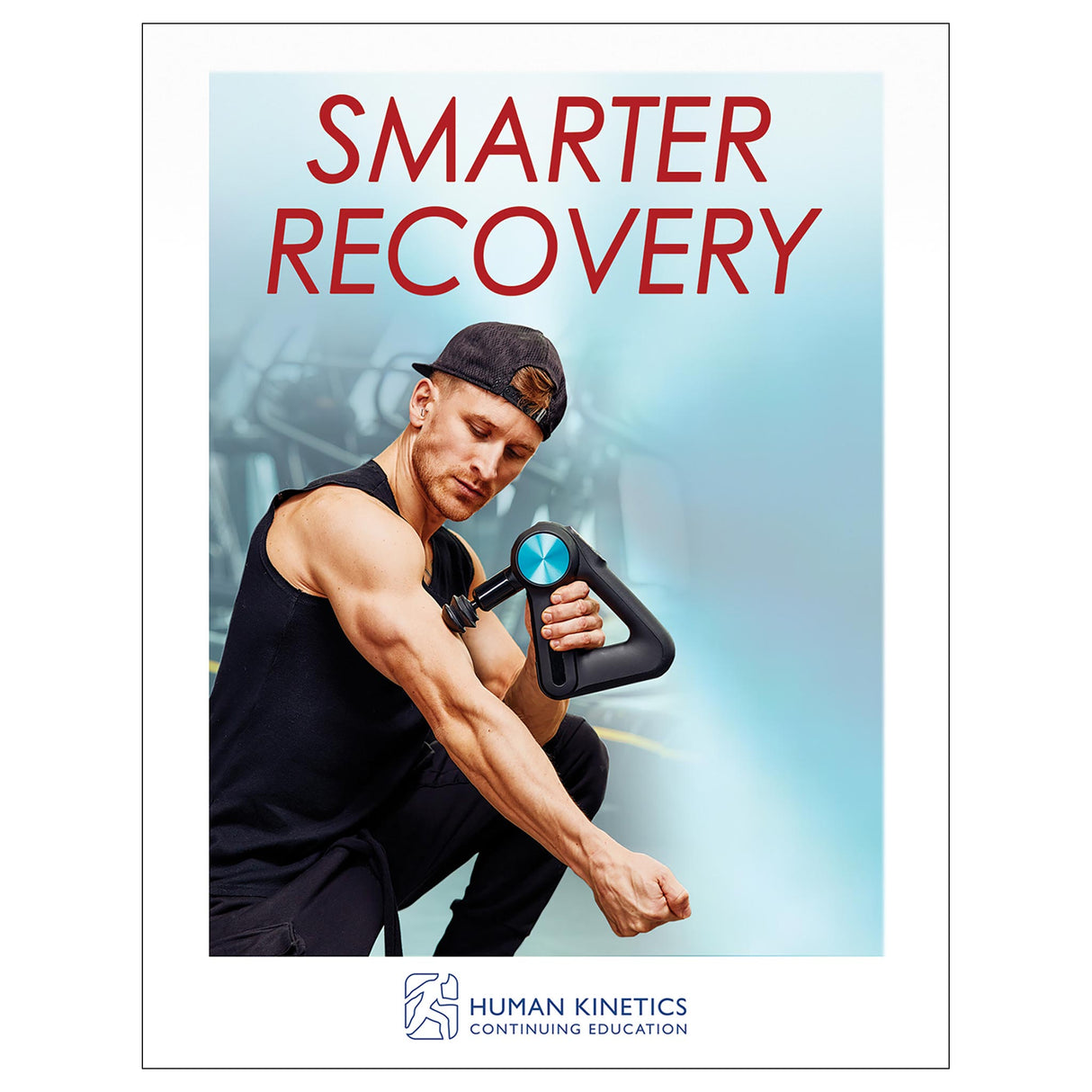Smarter Recovery Online CE Exam With Ebook
Author: Human Kinetics
$82.00 USD
Human Kinetics strongly recommends that you complete your exam within the calendar year of your date of purchase to ensure approved credits do not expire for your organization.
- Smarter Recovery ebook
- Online continuing education exam
Pete McCall, renowned personal trainer and author of the top-selling Smarter Workouts, cuts through the hype to explain what you really need to maximize recovery and to help your clients feel their best and reap the full benefits of each training session. With 58 exercises and stretches for recovery and mobility, Smarter Recovery breaks down the most effective tools, techniques, and methods, including these:
- Massage stick
- Foam roller
- Percussion gun
- Static stretching
- Mobility exercises
- Low-intensity strength exercises
After reading the ebook, certified professionals can take the companion CE exam to earn continuing education credits.
Learning Objectives
- Identify the physiological impacts of high-intensity exercise.
- Explain types of fatigue and how to recover from each.
- Evaluate the level of intensity performed by a client in a workout or training cycle, and determine what types of recovery work best according to the intensity used.
- Explain the concept of homeostasis.
- Describe fascia and why it’s important to consider as part of a recovery strategy.
- List appropriate recovery strategies for the first 24 hours after a workout.
- Understand the impact of exercise on the joints.
- Use concepts of periodization in offering recovery strategies to your clients.
- Outline the everyday healthy habits that promote recovery.
Audience
Certified personal trainers and other fitness and strength and conditioning professionals who want to maximize fitness results with effective recovery methods.Chapter 1. Understanding the Need for Recovery
Learn how your body responds to different exercise demands. Use the information in this chapter to make recovery an integral part of every workout to maximize your fitness goals.
Chapter 2. Impact of Intensity
Understand the connection between exercise intensity and the body’s need for repair so you can monitor intensity to allow for adequate recovery.
Chapter 3. Systems Overload
Optimize your body’s natural recovery mechanisms and understand their response to stress on various internal systems.
Chapter 4. Recovery Methods
Choose the type of recovery method that works best for your body, your workouts, and your budget.
Chapter 5. Fascia and Foam Rolling
Explore the functions of fascia and the science behind maintaining healthy muscle development through tissue treatment.
Part II. Strategies for Optimal Recovery
Chapter 6. Immediate Recovery: The First 24 Hours
Use the nutritional and hydration strategies as well as physical techniques in this chapter to maximize the recovery window for immediate gains.
Chapter 7. The Day After a Workout: Exercises for Active Recovery
Embrace the relationship between soreness and strength while incorporating a variety of recovery tools and exercises into your training plan.
Part III. Plan for Recovery
Chapter 8. Long-Term Planning for Recovery
Develop a solid recovery plan that incorporates your goals and lifestyle for weeks, months, and years ahead.
Chapter 9. Healthy Habits to Promote Recovery
Ensure that your fitness and recovery habits become part of your lifestyle for the long term.





